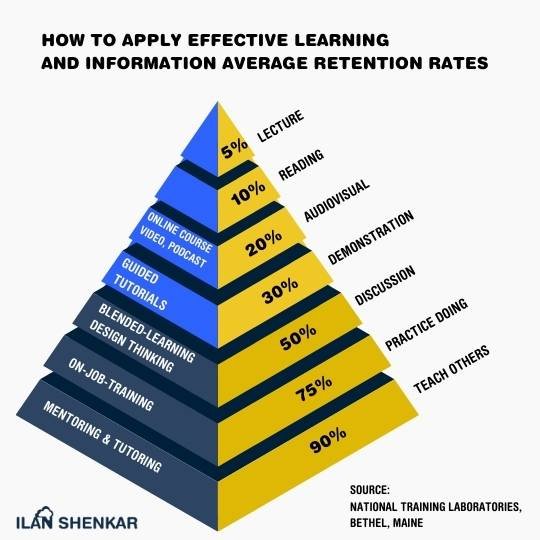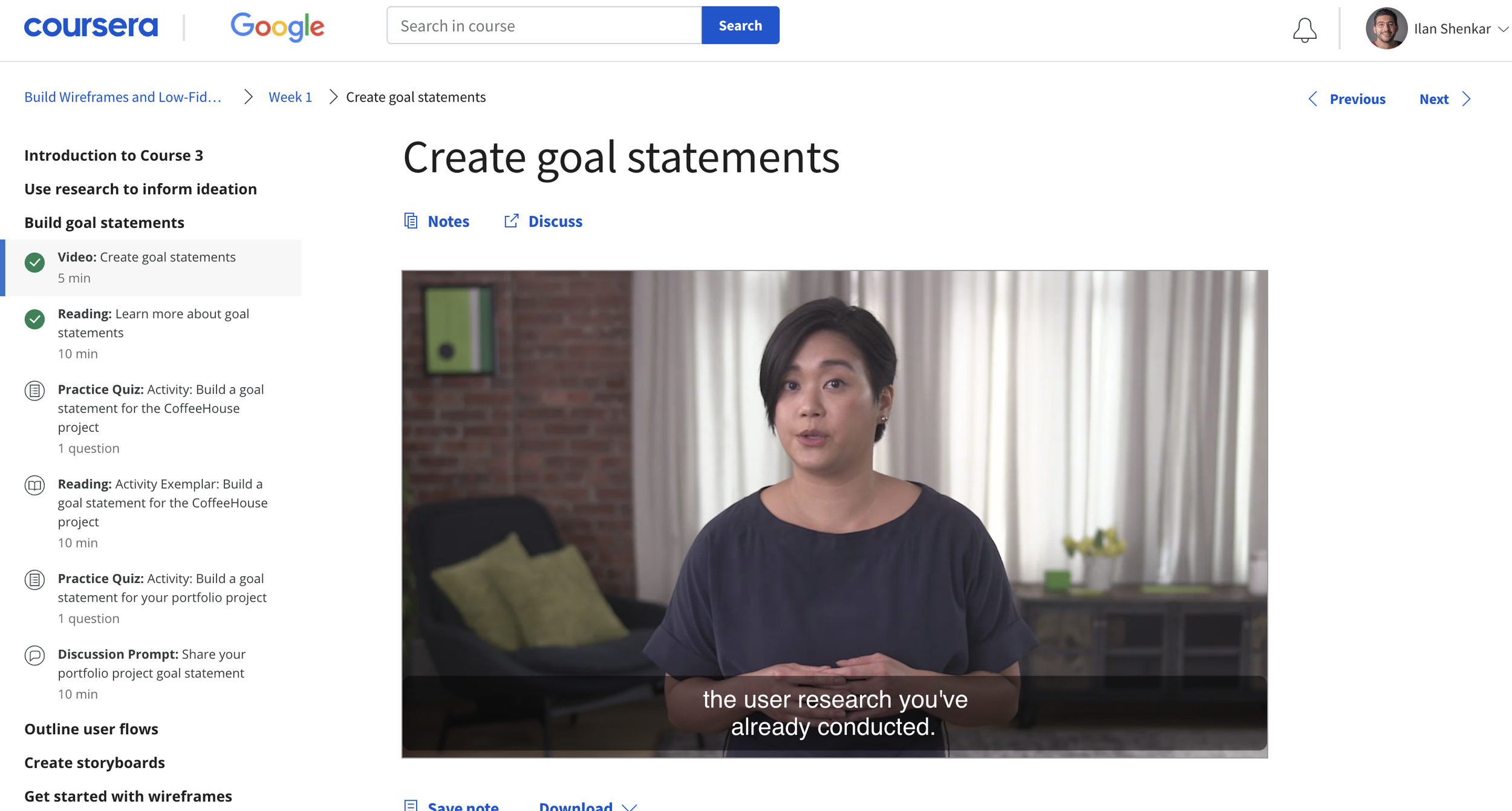How to maximize business outcomes with a learning design system? [A Business design framework]
J. Ismail / Internet and Higher Education 4 (2002).
Business challenge: Companies don’t see a clear return on investment from learning and development
Companies invest a lot of effort and resources to gain relevant knowledge for their business success. Whether it’s for employee training, market and user research, BI, sales, business development, or customer support.
The key challenge of using such knowledge is that once it arrives, it serves a closed circle (a “silo”) and doesn’t serve the whole business, sometimes a single individual.
In order to maximize business opportunities with existing knowledge, encouraging from the leadership level a “learning by design” mindset - is a must.
In this article, I will discuss how a learning design system framework might be a possible way to increase business performance.
If organizations were designed for increasing the learning efforts of all their stakeholders, they would gain multiple desirable business outcomes such as additional revenue, more motivated team members, less effort on retention, better MQL and SQL in sales, fewer support tickets, increased customer satisfaction, and higher-quality data.
This assumption is nothing new, this claim is basically the same as the famous “content is king” essay by Bill Gates in 1996.
In times of digital transformation, the main idea is to keep doing what you're doing, with more updated methods. Just as ERP is crucial for business operations and cloud infrastructure for data flow. The potential of learning/content infrastructure to impact all business units and stakeholders introduces many advantages.
Learning Design System for Business Hypotheses
I’ve been experimenting for a few years how learning efforts can influence business outcomes. Every worthy finding was experimented with in a company I owned, MonteVideo Communications, in both internal and external use cases.
Assumptions:
Time > Money - Business resources should focus on making the best out of our time. Time is priceless, every moment counts and won’t be back.
Provide learning more like marketing: snackable, insightful, engaging, no fluff, and straight to the point.
Just as design systems make designers work better, c-levels should implement their own business design systems. (This model is focused on the benefits of learning).
The pyramid of how people actually learn, process, and retain information.
The graph above shows that the more active learning efforts are, people learn more effectively.
Whenever I write “learning efforts” I actually refer to digital content produced to inform all target audiences of an organization. Its own employees, management, vendors, partners, clients, and potential prospects.
Learning efforts may be anything from documents, presentations, articles, zoom meetings, video files, audio files, interactive experiences used at any given department: marketing, HR, sales, customer success, etc…
The same training program for your salesperson can be packaged and sold as a product. At a high level, the suggested approach is looking at learning efforts as assets that serve multiple stakeholders.
Google for example has a UX Design Professional Certificate program. On one hand, it’s a product (a digital course) that I pay for in Coursera to learn UX, but it may also serve for training junior UX designers at Google as well. So this solution serves Google both in sales and training.
Step-by-step guide on the Learning design system framework for business
I developed these findings into an actual learning design system framework that I want to share with you below.
The practical application of a learning design system framework is showing how to start a business with a transparent learning culture that maximizes business opportunities with digital content. Ideally from a company’s foundation.
The outcomes of implementing a learning design system are:
Better people communication internal and external.
More business opportunities.
Better training efforts.
More accurate marketing efforts.
A culture of learning and sharing.
Less customer support tickets.
Fewer knowledge gaps and silos.
Learning design system blueprint
Explaining the Learning design system framwork
The process begins with the organization's learning strategy. Here you define goals, people, resources involved. The more diverse the people involved, the more insightful and accurate it will be.
Then at the setup phase, the learning strategy meets reality.
What assets do you already own?
What technology will be used to contain all our information so it will serve relevant stakeholders.
Instructional design helps balance content efforts with cognitive level, what should be repeated, what goes in text, and what might work better on video. At the end we understand how much content will be produced and for what goals.
Branding guidelines are crucial since learning efforts are many, you would like them to align with your brand’s looks, voice, and tone.
Lastly comes functions - who are the people responsible for operating this machine? what are they accountable for? how often?
After setup is clear and done, learning assets are organized in an editorial state of mind, Ideally directed by someone like a “head of content/learning”.
The information should reflect the business’ actual state and business units.
Produced content shouldn’t be a one-time effort, but a constant process. Content develops according actual needs, it may start with a simple document and grow into a video series, blog, AI conversational chatbot or anything you need.
All produced learning efforts get cataloged and tagged in the LMS/LXP and then can be used by any business unit.
The important emphasis here is that no learning effort gets lost. learning is streamlined in the chosen system and accessible.
Keep in mind that knowledge should be updated from time to time and someone should be accountable for it.
Insights:
This framework suggests that learning efforts are made of organized digital content delivered by a technological platform to serve business needs.
Innovation comes in place when we think about content in terms of architecture, not just for the sake of learning, but to achieve clear business purposes.
The learning design system framework can be developed into a whole ecosystem and used as a business model, SaaS, consulting services, and a community.
Identified opportunities In business models:
Sales and Bussiness Development - Easier access to information on E-learning, digital courses, webinars, live sales sessions, interactive experiences, demos, product launches, go-to-market efforts, and market-fit.
New sales opportunities in selling consulting services, selling SaaS, selling educational and learning programs. potentially impacting revenue LTV/CAC and ARR KPIs.
HR - Easier training efforts, employee and employer branding, increased transparency and pro-learning culture, faster onboarding, support HRIS with a constant stream of content.
Marketing - improved research abilities, inbound, outbound, marketing, new assets, new insights, more accurate campaigns, increased employee and employer branding, and richer content marketing.
CX - Improved self-help, reduced amount of support tickets, increased NPS rate.
Identified opportunities In SaaS
There are many great companies, each one developed its own framework and services, serving a specific business unit or business problem.
enabley on corporate training, answering many business units needs.
Instructure for k-12 and higher education.
Juno journey on HR for employee engagement and retention.
Wonderwerk on sales training.
Gloat on HR in talent marketplace.
While I did see many LMS platforms, I still haven’t found a learning design system framework as SaaS.
Lastly, I will say that the purpose that made me framework this process is for an organization, in a specific pillar and it's currently in a pilot. you can read more about it here.
I hope you find this framework useful for your needs, I would love to hear anyone trying to implement this at its organization. The framework might be updated as reality develops and I get more chances to try and experiment with it.
Let me know if you have any questions about it.



